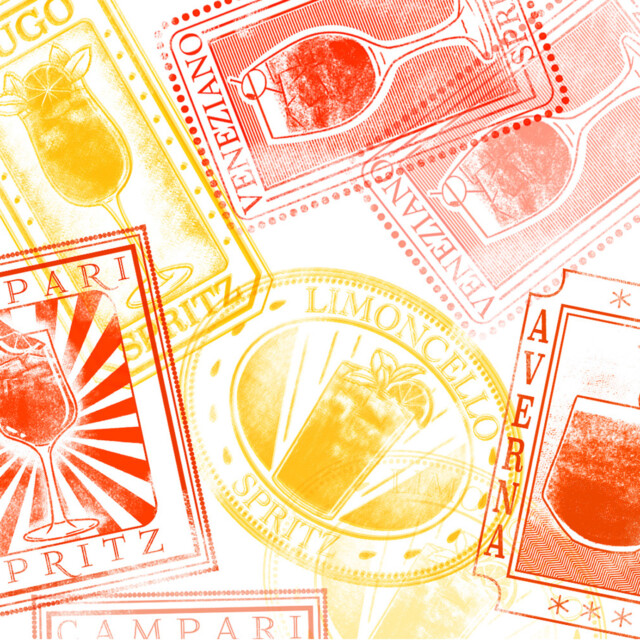
Much like the passionate and devoted fans of Italy’s football clubs, regional allegiances abound when it comes to the Spritz — though there’s no denying the universal appeal of the Aperol Spritz, which first took over the Veneto region, then Italy, and now the world.
Thanks to the popularity of that bright and bubbly, orange-hued drink, the Spritz has become ingrained and reimagined in American drinking culture. Around this time every year — after spring takes a hard pass on easing into summer, the temperature rises, and outdoor tables are in demand — the echoing call of yet another “Summer of the Spritz” ensues.
In “The Oxford Companion to Spirits and Cocktails,” Leonardo Leuci, owner of the Jerry Thomas Speakeasy in Rome, traces the roots of the Spritz to the 1840s. At that time, northeastern Italy was occupied by Austro-Hungarian soldiers, diplomats, and officials who took to adding a splash (the German word for Spritz) of sparkling water to the region’s stronger wines to make them sessionable. These simple “Spritzers” of white wine and seltzer served as a nostalgic reminder of the beer they were more accustomed to back home.
As the Spritz evolved, the ingredients became regionally driven, incorporating locally produced bitters and vermouths. Even today, the Spritz remains ripe for customization and reinvention as bartenders continue to take inspiration from the drink’s easy-to-replicate 3:2:1 template (3 parts sparkling wine, 2 parts bitter aperitivo, 1 part soda water), adding additional liqueurs and even flavored seltzers and Italian sodas.
While there’s no denying the stylish elegance an ice-packed glass filled with a brightly colored Spritz conveys, the inherent low-ABV profile is key to the lasting success of the Aperol Spritz. Damiano Coren, the born-and-raised-in-Rome consultant and bar director for the Sant Ambroeus hospitality group, considers the Spritz “the crown of Italian cocktails,” noting that the Aperol Spritz has helped drive the recent trend of Americans being “more aligned” with Italian drinking culture.
While most of the following regional Italian Spritzes honor the classic template of bitter, Prosecco, and soda, they each evoke a sense of place, culture, and tradition, whether you’re tableside at Milan’s historic Camparino in Galleria or at the corner seat of your neighborhood bar.
Aperol Spritz
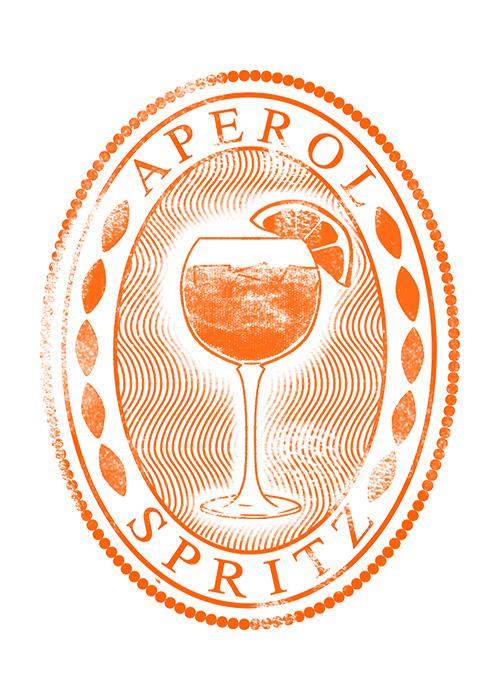
Where It’s From: Padua, Veneto
The Serve: Aperol, Prosecco, soda water, served in a stemmed balloon or wine glass over ice, garnished with an orange half-moon slice.
Introduced in 1919 by Italian brothers Luigi and Silvio Barbieri in Padua, Aperol, the vibrant, sunset-hued, low-ABV (11 percent) aperitivo liqueur knows how to stand out in a crowd. Its primary method of service, the Aperol Spritz, dominates as one of the world’s most ubiquitous and most recognizable drinks. “The Aperol Spritz needs no introduction,” says Coren. “We don’t even have to list it on our menu and it remains our No. 1 bestseller.”
“At some point near the end of the 20th century — it is difficult to establish exactly when — beach bars on the Venetian Riviera began using Aperol in their Venetian Spritzes and serving the drink with ice in a large wine glass,” Leuci writes in “The Oxford Companion to Spirits and Cocktails.” The resulting drink spread rapidly throughout the region, and then the country. But it was after Gruppo Campari acquired Aperol in 2003, later followed by strategic seasonal marketing and advertising campaigns, that the Aperol Spritz became synonymous with the sun-baked, transportive nature of the drink.
Coren acknowledges that the Aperol Spritz is an “entry level” drink that can land on the sweet side for many palates. But there’s no denying its continued popularity, especially as it’s so easy to replicate at home. “It’s fashionable to go to a convivial place and enjoy an Aperol Spritz and the conversation of friends,” Coren says. “Growing up in Rome, if you ordered an Aperol Spritz it would be considered weird. But now, from Sicily up to the north, it’s a drink that has no haters.”
Spritz Veneziano
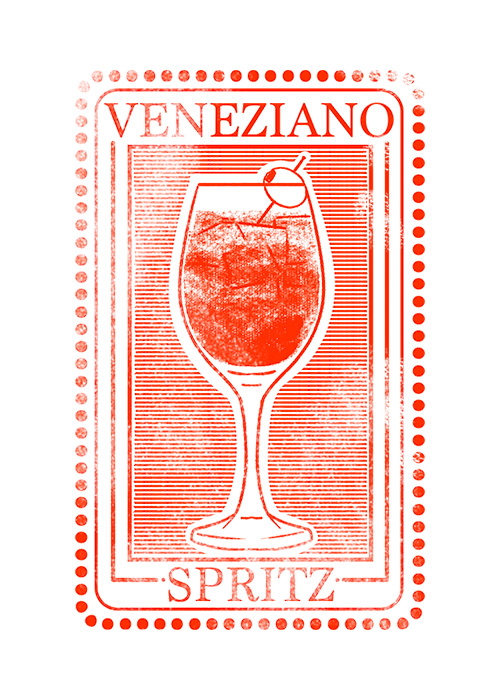
Where It’s From: Venice, Veneto
The Serve: Select Aperitivo, Prosecco, soda water, served in a stemmed wine glass over ice, garnished with a single skewered green olive.
Originally, if you were drinking a Spritz in Venice, it was likely made with Campari, the most widely available red bitter in Italy, or Aperol from nearby Padua. But today, the Venetian Spritz is synonymous with Select Aperitivo. Created in Venice in 1920 by the Pilla brothers, by the 1970s, Select had crossed the city’s lagoons and canals to spread its reach across the aperitivo belt of northern Italy.
Select became part of Gruppo Montenegro, based in Bologna, in 1988, and in recent years has become more widely available in the U.S., though it still has a lot catching up to do to reach the stateside popularity of Campari and Aperol. You’ll notice the Spritz Veneziano eschews the Spritz’s standard orange slice in favor of a single green olive. While it looks striking, the garnish plays a larger purpose beyond mere decoration, imparting a briny salinity to the drink that plays well with the bitter profile while toning down some of the sweetness.
Campari Spritz
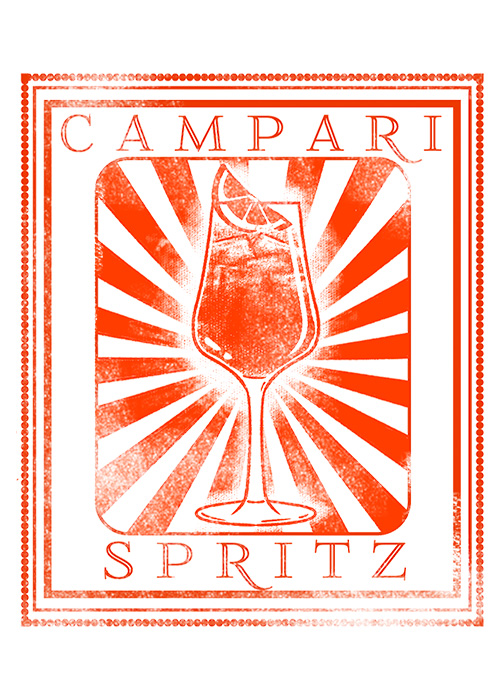
Where It’s From: Milan, Lombardy
The Serve: Campari, Prosecco, soda water, served in a stemmed wine glass over ice, garnished with an orange half-moon slice.
As a key ingredient in some of Italy’s most iconic drinks, from the Americano to the Negroni, Campari stakes a worthy claim as one of Italy’s most elegant exports. While the Campari Spritz — spotlighting Gaspare Campari’s signature bitter, created in Novara, Italy, in 1860 — may not rival the popularity of the Aperol Spritz, it represents a more nuanced, and admittedly divisive, option.
“What people were drinking in Milan would spread to northeastern Italy and then mainland Italy,” Coren says. “Milan was one of the first places to adapt the Spritz formula, and if you were Milanese, you drank Campari.”
Limoncello Spritz
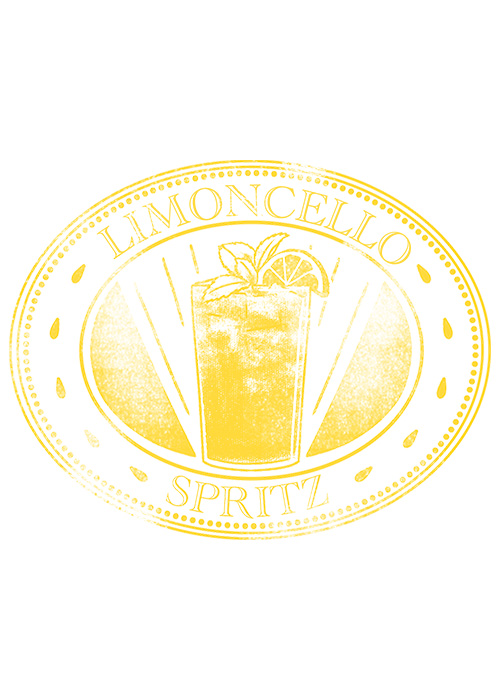
Where It’s From: Amalfi Coast, Campania
The Serve: Limoncello, Prosecco, soda water, served in a stemmed wine glass over ice, garnished with 1–2 lemon wheels and fresh mint sprigs.
One of the more transportive and equally refreshing Spritz variations resides on Italy’s picturesque Amalfi Coast along the Tyrrhenian Sea and the Gulf of Salerno. With the continued popularity of the region among vacationing tourists, it’s no surprise that this signature drink, made with limoncello, Prosecco, and soda water, has been adopted and rebranded as an Amalfi Spritz.
One notable variation that’s a top-seller at New York’s Caffe Dante and Dante West Village is the Amalfi Limonata. “What heatwave?” you’ll wonder as you take your first sip of the shaken blend of Malfy Gin con Limone, limoncello, lemon juice, lemon curd, and sparkling limonata soda served in a tall, fat tumbler packed with a mountain of pebble ice, and garnished with a bouquet of mint sprigs.
While there is a slight natural bitterness from the lemons used to make limoncello, Coren notes that the Amalfi Spritz can be enhanced even further with some minor adjustments, such as adding a splash of Campari. “Campari brings out a pleasant note of bitterness, which helps cut the sweetness,” Coren says.
Hugo Spritz
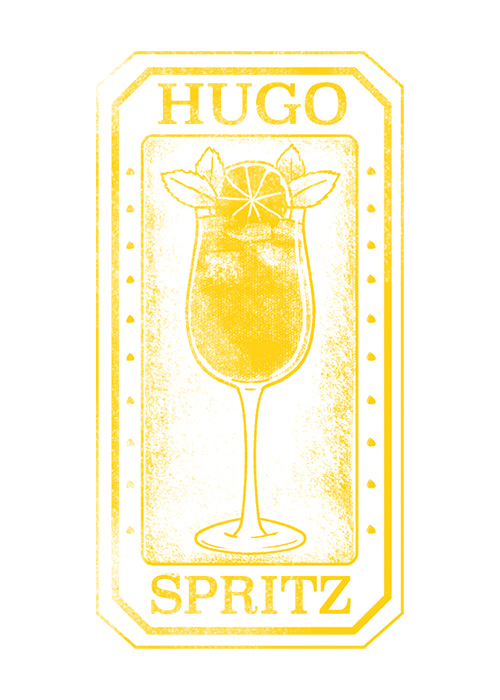
Where It’s From: South Tyrol, Trentino Alto Adige
The Serve: Elderflower Liqueur, Prosecco, soda water, served in a stemmed wine glass over ice, garnished with a lime wheel and fresh mint sprigs.
There seems to be a campaign each summer to make the Hugo (pronounced “Ugo”) the new Spritz in town, but despite the drink’s attractive appearance — adorned with fresh mint sprigs and a bright green lime wheel — it’s been an uphill battle.
The Hugo was created in the early 2000s by bartender Roland Gruber at his hometown bar, San Zemo, in South Tyrol in northern Italy, originally mixing a local lemon balm syrup with Prosecco and soda water before changing over to elderflower liqueur.
Despite its provenance, the accent of lemon and mint lends the Hugo a decidedly Mediterranean profile that makes it wildly appropriate for summertime Spritzes. As to why it hasn’t taken the stateside aperitivo scene by storm? “It’s very easy,” says Coren. “It’s missing the key bitter element that’s associated with a Spritz. It can be a little flat and kind of sweet,” he says, suggesting adding a bit more character with an Italian liqueur, like Italicus Rosolio di Bergamotto Italian Liqueur or Strega infused with chamomile.
Averna Spritz
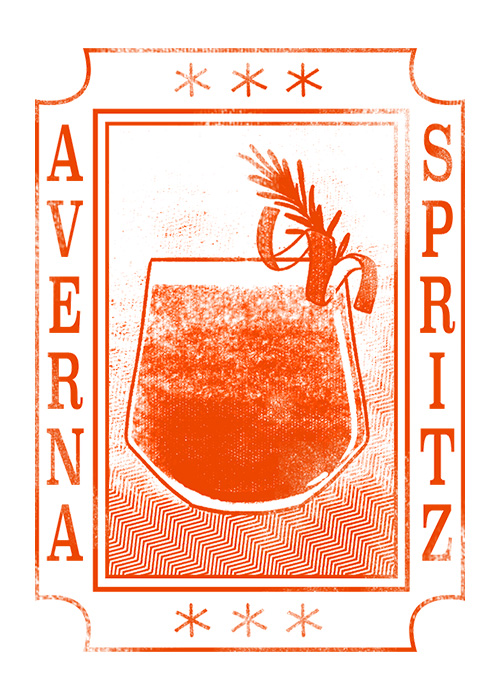
Where It’s From: Caltanissetta, Sicily
The Serve: Averna, Prosecco, soda water, served in a stemmed wine glass or tumbler over ice, garnished with an orange or blood orange half-moon slice.
The golden child of Sicilian amaro, Averna is rich with notes of Mediterranean herbs, lemon, orange, and pomegranate. The amaro’s cola-like quality and subtle bitterness makes it a slightly bolder alternative to a classic red bitter Spritz.
Yet another star in Gruppo Campari’s Italian portfolio, Averna dates back to 1868, originally created by the Benedictine monks of the San Spirito Abbey in Caltanissetta, Sicily, going on was to become the official supplier to the royal house of Italy’s King Vittorio Emanuele III. When utilized in a Spritz, Averna comes on like chinotto, the popular bittersweet, cola-colored carbonated Italian soft drink made with the aromatic fruit of the myrtle-leaf orange tree.
Cynar Spritz
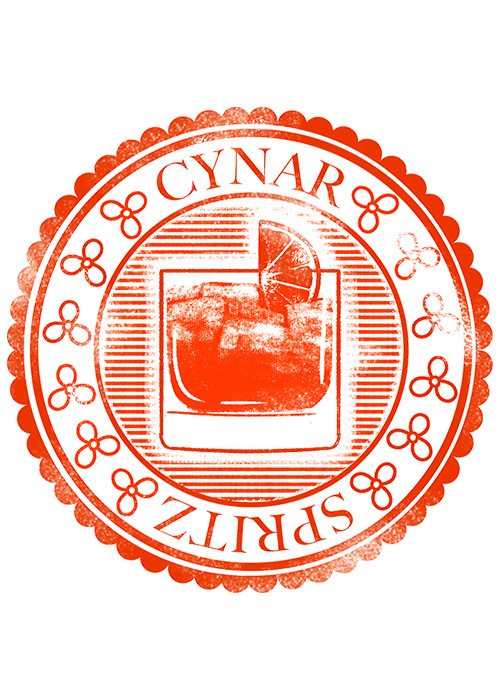
Where It’s From: Venice, Veneto
The Serve: Cynar, Prosecco, soda water, served in a stemmed wine glass or double Old Fashioned glass over ice, garnished with an orange twist or orange half-moon slice (optional fresh sprig of rosemary).
While it has been a part of the Gruppo Campari portfolio since 1995, Cynar was first created in Venice in 1952 by local philanthropist Angelo Dalle Molle. It’s the poster boy for the carciofo style of amaro, which uses dried artichoke leaves as a key ingredient, imparting a mild vegetal note. But despite its dark and moody hue, Cynar’s 16.5-percent ABV and pronounced bitterness make it especially dynamic in cocktails, where it can hold its own as a base ingredient or a modifier.
Cynar’s earthy and herbal profile runs counter to the brighter sunset hues of most classic Spritzes, but the Cynar Spritz is popping up more and more as a default order for amaro aficionados, whether served al fresco on a scorching summer day or fireside on a cold winter’s night. Coren’s preferred twist is serving Cynar over ice topped with a bold Cabernet, a touch of cinnamon, and a splash of soda, served with a grapefruit slice.
Pirlo Spritz
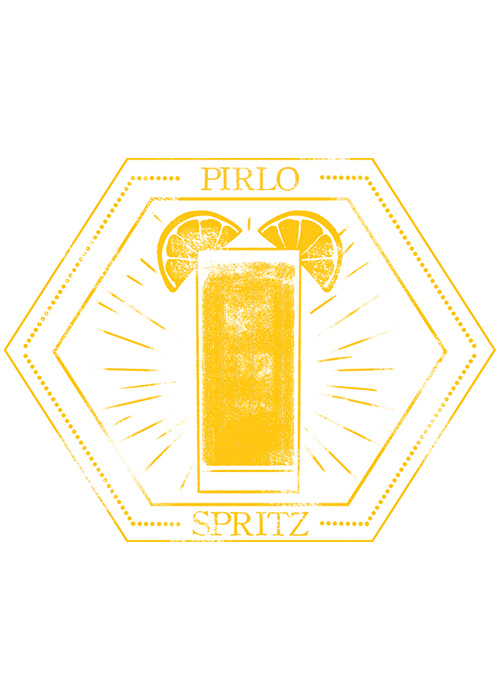
Where It’s From: Brescia, Lombardy
The Serve: Campari, still white wine, soda water, served in a stemmed wine glass or highball glass over ice, garnished with 1–2 orange half-moon slices.
Simplicity is key when it comes to aperitivo and the Pirlo, considered the precursor to the Spritz Veneziano, is a relatively austere offering you’ll likely find only in the city of Brescia, in Lombardy in northern Italy. What sets it apart from its bubbly and bittersweet Venetian figlio is utilizing still white Italian wine rather than sparkling wine. The drink shares its name with famed Italian former football player and now-manager Andrea Pirlo, but be careful not to ask for a “Pirla” as that means idiot (or something even more vulgar) in Milanese dialect. (Pirlo is derived from “pirale,” which means “to fall” in local dialect — an allusion to how the blush of Campari mingles with the wine in the glass.)
Outside ofBrescia, this same build also travels under the name Bitter con il Bianco, which uses a bit more soda water and is served in an ice-filled highball glass with an orange twist rather than a stemmed balloon glass with an orange slice. A better-known, though still relatively under-the-radar, Campari and wine drink is the Bicicletta, which first appeared in northern Lombardy in the mid-1930s, named for the preferred method of transportation of older Italian gentlemen who would walk their bicycles back home from the bar after a few too many of the namesake drinks.
Friuli Spritz
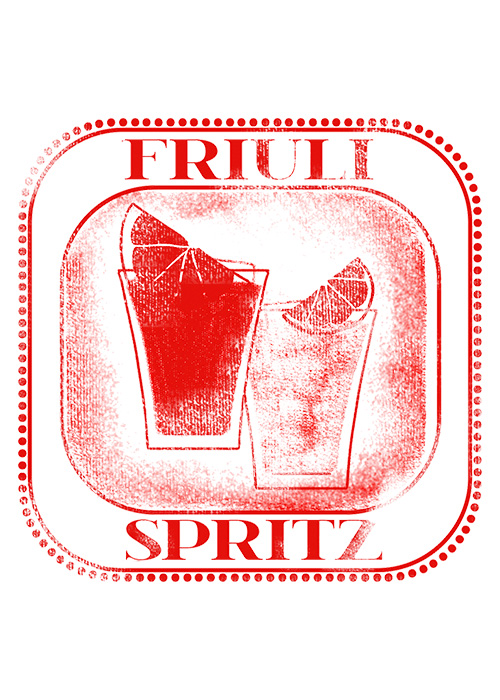
Where It’s From: Friuli, Friuli-Venezia Giulia
The Serve: White or red wine and soda water, served in a stemmed wine glass or small tumbler, garnished with a lemon slice for white wine and an orange slice for red wine.
A super deep-cut on the regional Spritz circuit, found in Friuli-Venezia Giulia in northeast Italy, there’s not much information out there on this so-called “Friuli” Spritz. Elisabetta Nonino, who, along with her sisters Cristina and Antonella, make up the fifth generation of her family’s distillery in Percoto, Friuli — known worldwide for its acclaimed grappa and amaro — offers some additional background info.
Nonino explains that it’s an older drink that you’ll see at osterias and bars in Friuli and Udine, typically served before lunch or during aperitivo hour. The Spritz bianco version is served in a classic wine glass using a local Tocai Friulano topped with a bit of soda water (it was originally just still water), a few ice cubes, and garnished with a lemon slice. Nonino laughs when talking about Italy’s stingy reputation when it comes to ice. “Ice is only for Americans,” she says. “When you ask for a lot of ice in Italy, you’re lucky if you get three cubes.”
The less popular red wine version, served in a small glass tumbler called a bussul, sees a pour of a red wine, such as Merlot or Cabernet, topped with soda water, and sometimes garnished with an orange slice. According to Nonino, this version is more common to drink during the winter months.
